JR exhibition in Hong Kong
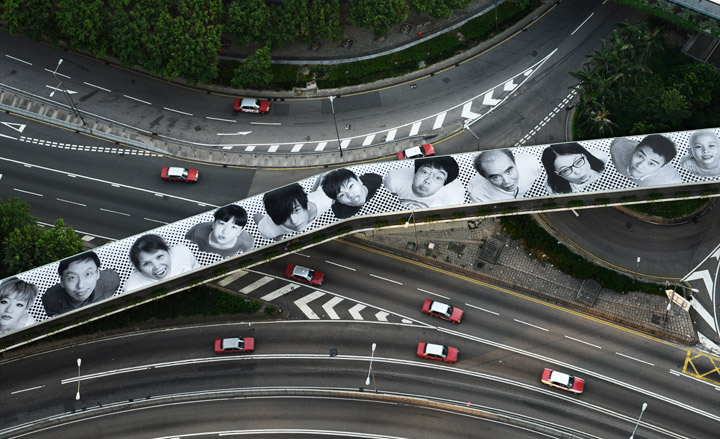
French street artist turned photographer JR is an enigma on all fronts, an internationally renowned artist who insists on anonymity, eschews brand sponsorship and has a mission to make artists of us all. He photographs residents in areas that have drawn his attention, then pastes the monumental images on buildings, leaving the interpretation for others.
The best known works of the 28-year-old artist are arguably from his 'Women are Heroes' series, created when he visited a Rio de Janeiro favela - so dangerous it's avoided even by police - to photograph mothers who lost innocent boys in gang violence. JR's startling black-and-white eyes pasted on the simple favela homes generated an international media storm. 'Being anonymous meant that anyone who wanted to know more about their story had to go and talk to the women,' he says. 'I realised their narrative is much stronger than mine will ever be.'
In another project, the artist held the world's largest illegal photo exhibition, displaying in parallel portraits of Israelis and Palestinians holding the same jobs - on both sides of the Palestinian border. This prompted a new discourse over who people perceive as their enemies.
And so to Hong Kong and the culmination of JR's TED prize-winning project, 'Inside Out'. For 'Pattern', JR invited a cross section of Hong Kong citizens to express themselves in the artist's itinerant photo booth. Galerie Perrotin, the new Hong Kong branch of the contemporary Parisian gallery, has sponsored the resulting exhibition, for which 16 of the photo-booth portraits were pasted atop an elevated footbridge, in view of the Cesar Pelli-designed IFC complex, where the gallery is located, and the surrounding skyscrapers.
And at Galerie Perrotin itself, the 'Pattern' exhibition continues. Here, JR is showing his first series of 'crinkled' cast aluminum sculptures and photographs on wood panels.
Wallpaper* caught up with the artist to discuss the power of anonymity, heroes and the role of architecture in his work.
Why the JR moniker? Is anonymity still important when you're working on 'legal' projects?
When I was 17 doing graffiti, it was logical to use my initials to avoid being caught. But it still allows me to travel and work freely, to do whatever I want. If my name comes out one day, it won't be a big thing, it will just make my work a bit harder. The portraits are about the people in them, not me.
Your work usually involves a strong political statement. Is this deliberate or a byproduct of your art?
Some people use my projects to make art, some protest with it. In Tunisia people all around the country pasted in portraits of ousted dictator Zine El Abidine Ben Ali. It was crazy to see, but I don't try to give answers on how a country should be ruled. When people ask me what should change, I tell them to ask the people in the portraits. I work in the street with the people and they quickly realise that if you are there without anyone else, it is not about sponsorship. They decide if it makes sense or not. If it does, they start pasting.
Is street art becoming too commercialised?
I don't work with brands. It dilutes the message. Explaining the 'how' to people is very important. In Tunisia there were a lot of people who were suspicious of who we were and why we were pasting photographs. They could see we were not local and things were very tense because of the revolution. We learned that the Tunisians who were doing the pasting of portraits had to explain first, then paste. If everyone understands, the message is simple and it cools down the street. When I was there they were suspicious - when I got out of the equation it was better. But working with a museum or gallery can also be very effective. I was asked to return to Rio to do another exhibition at a museum and it had a huge impact. The director of the museum even got fired.
How do you choose a building for one of your photographs?
Architecture has been much more important to me than people think. When I paste, it is not about the photo alone. First you have to adapt to a city - in Liberia the buildings are small but in Paris you have to cover the entire island to fit the city. In Hong Kong I thought the bridge would create a dialogue. From the beginning I would adapt my pictures to the building right down to the detail of a window. That's what I love - it's like a performance.
What's new about your Hong Kong exhibition?
It's the first time I've done sculpture, but I think this is a good way to show my work inside. The power of the image is in the street. That's the best way to frame it: it's out there - you can't own it or use it inside in the same way. I was used to working with a lot of crumpled paper, and then I decided to do it as a permanent piece. It's like paper flying in the air but it is actually aluminum. I am also doing wood pieces because it gives an image a special effect. Normally I would paint with an image facing outward but here I paint in reverse, and then peel the paper off and the image slowly emerges on the wood. I like to keep the marks and the grain. You see through the eyes to see the wood.
This show is named 'Pattern' because I am also using dots that are the pixels in every picture. We started using them because people photograph on a low quality camera and this helps that and makes it part of the project. With every project I've done, I'm always hit with questions about who I am and why I do this, but with 'Inside Out' it's all about the other 100,000 artists involved in 10,000 actions using art to express themselves. It is my project but their faces and story.
'Pattern' is co-presented by the Consulate General of France in Hong Kong/Macau
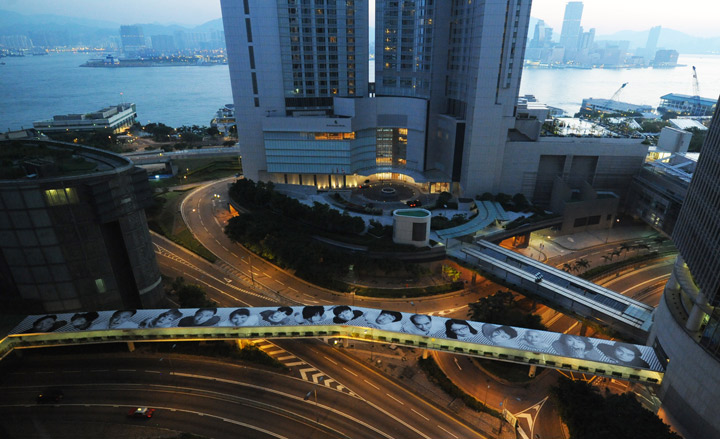
The bridge is in view of the Cesar Pelli-designed IFC building, where Galerie Perrotin, sponsors of the exhibition, are located

JR says he hoped to encourage a dialogue between workers in the overlooking skyscrapers and the figures in the portraits

The 'Pattern' series continues at Galerie Perrotin itself, where JR is showing a 'crinkled' cast aluminum sculpture, titled 'Inside Out Sculpture #1, 2012'
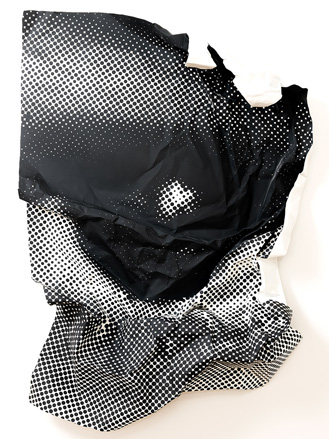
A close-up of 'Inside Out Sculpture #1, 2012'
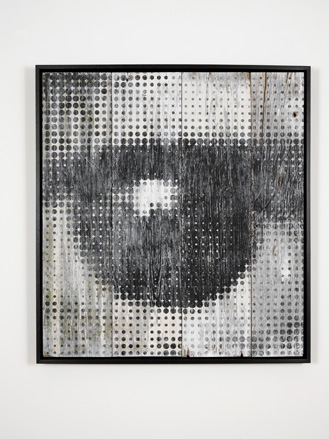
JR is also showing a series of photographs on wood panels. Pictured is 'Inside Out Project – Oeil Trame #2, 2012'
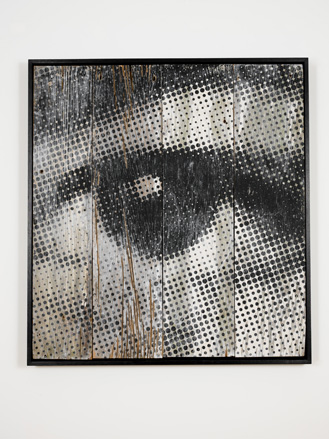
'Inside Out Project – Oeil Trame #3, 2012'

'Inside Out Project – Oeil Trame #4, 2012'

Past installation works by JR include '28 Millimetres: Women are Heroes, Action in Favela Morro da Providência, Stairs, Rio de Janeiro, Brazil', a series of works created in the favelas of Rio in 2008
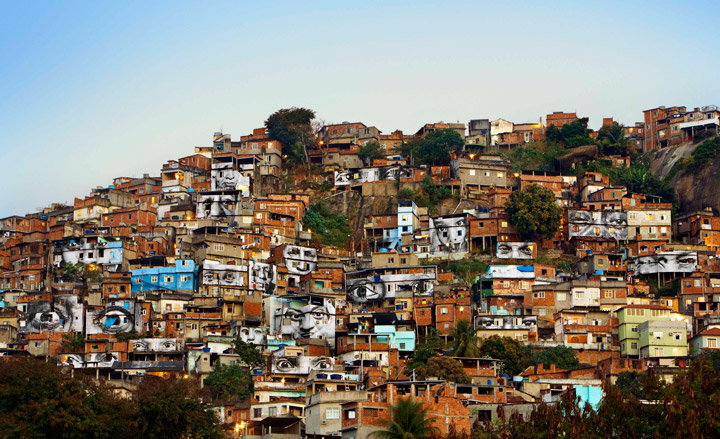
'Women are Heroes: Favela Morro da Providencia, Rio de Janeiro', 2009
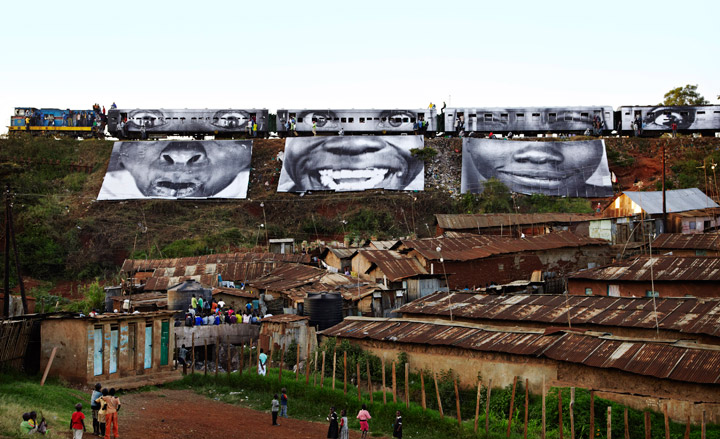
The series continued in Africa, with '28 Millimetres: Women are Heroes, Action In Kibera Slum, Train Passage , Kenya', 2009
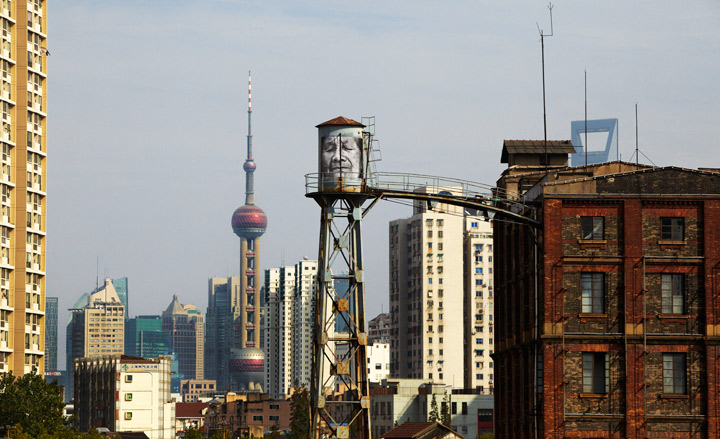
In Shanghai he presented 'The Wrinkles of the City: Action in Shanghai'. Pictured here is 'Zhao Liying, By Day: China', 2010

'Zhao Liying, By Night, China', 2010

Also in Shanghai: 'Cao Minja: China', 2010
Photography: JR, courtesy jr-art.net / Galerie Perrotin, Hong Kong & Paris
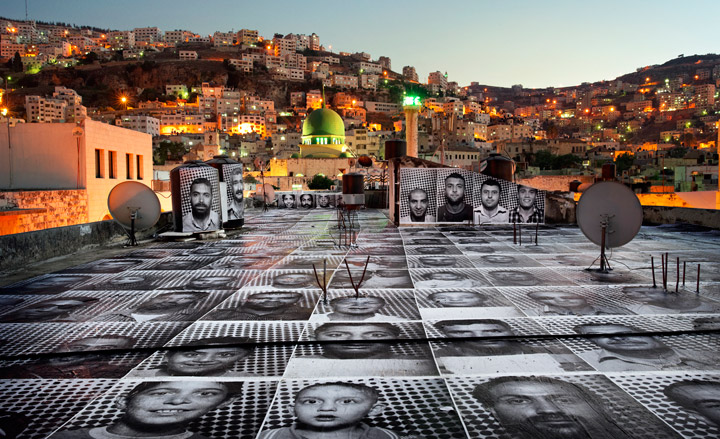
A 2011 exhibition by JR was presented in Nablus, in the West Bank, Palestine

'The Wrinkles of the City, Los Angeles, Robert’s eye', 2011, was mounted on the facade of Galerie Perrotin in Paris
courtesy JR / Galerie Perrotin, Paris
ADDRESS
Galerie Perrotin
50 Connaught Road Central
17th Floor
Hong Kong
Receive our daily digest of inspiration, escapism and design stories from around the world direct to your inbox.
Catherine Shaw is a writer, editor and consultant specialising in architecture and design. She has written and contributed to over ten books, including award-winning monographs on art collector and designer Alan Chan, and on architect William Lim's Asian design philosophy. She has also authored books on architect André Fu, on Turkish interior designer Zeynep Fadıllıoğlu, and on Beijing-based OPEN Architecture's most significant cultural projects across China.
-
 Each mundane object tells a story at Pace’s tribute to the everyday
Each mundane object tells a story at Pace’s tribute to the everydayIn a group exhibition, ‘Monument to the Unimportant’, artists give the seemingly insignificant – from discarded clothes to weeds in cracks – a longer look
-
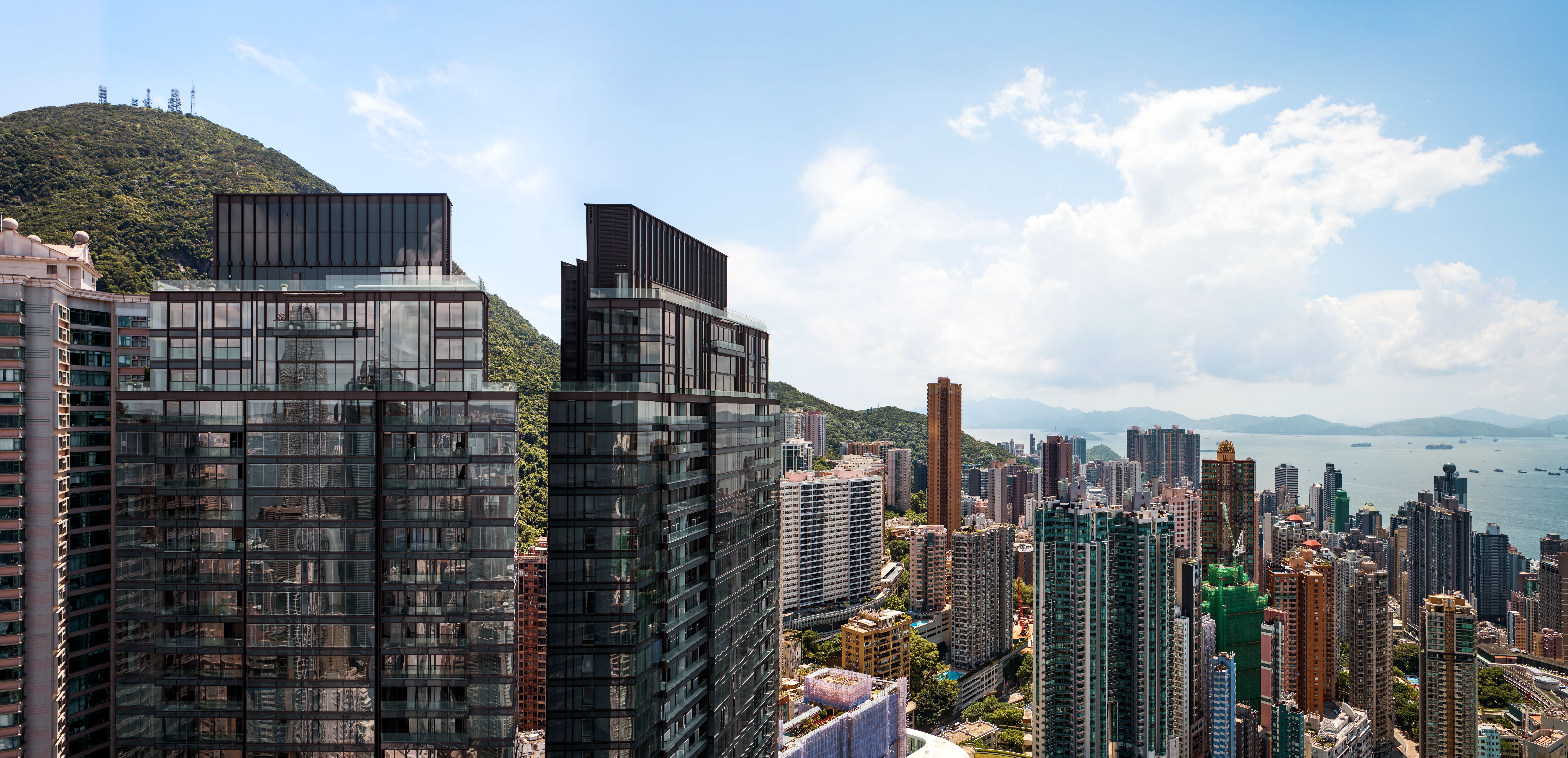 Discover The Legacy, Hong Kong’s eye-catching new condo
Discover The Legacy, Hong Kong’s eye-catching new condoThe Legacy, by ACPV Architects Antonio Citterio Patricia Viel, is a striking new condo tower that aims to ‘create a sense of community and solidarity among people’
-
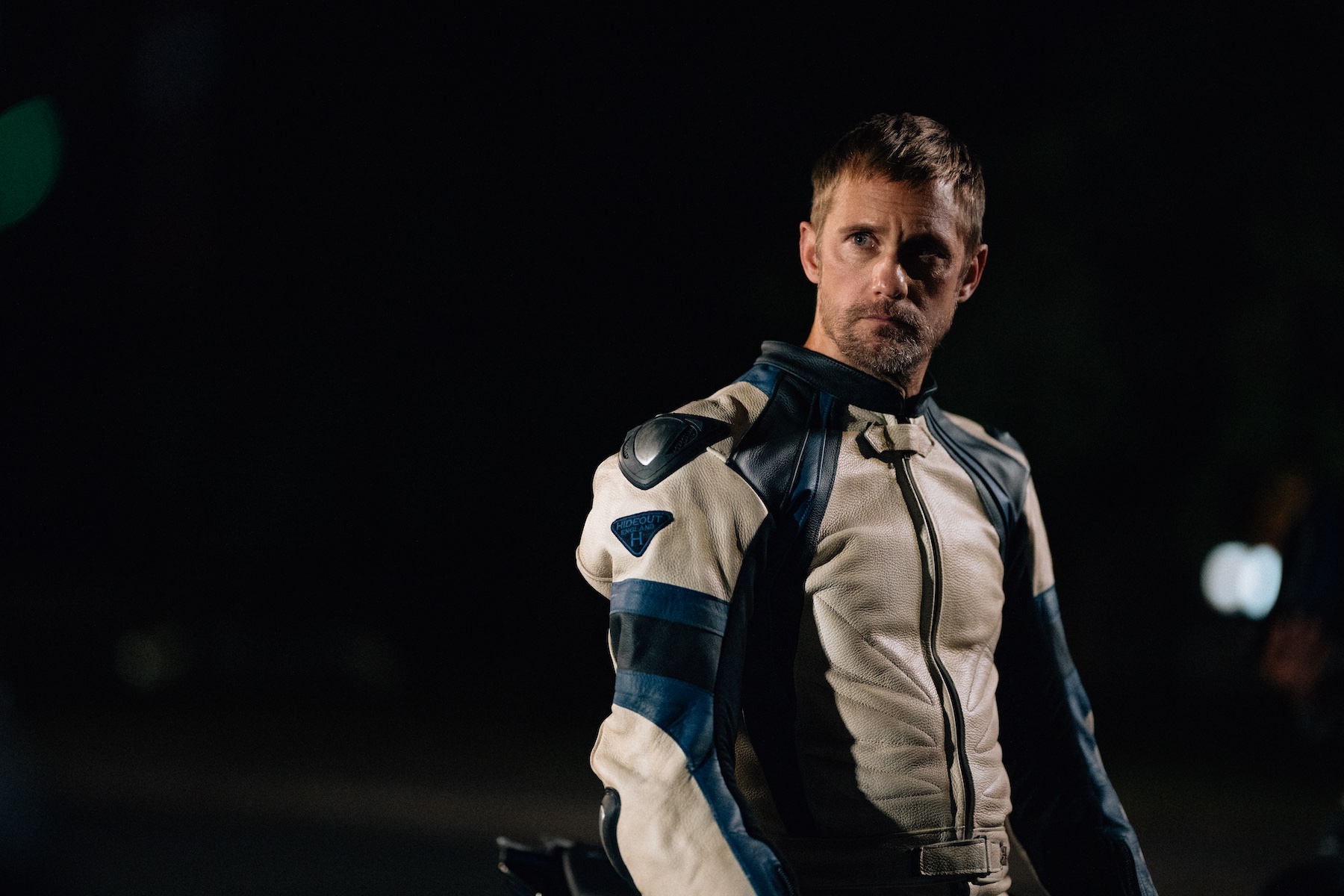 In BDSM biker romance ‘Pillion’, clothes become a medium for ‘fantasy and fetishism’
In BDSM biker romance ‘Pillion’, clothes become a medium for ‘fantasy and fetishism’Costume designer Grace Snell breaks down the leather-heavy wardrobe for the Alexander Skarsgård-starring Pillion, which traces a dom/sub relationship between a shy parking attendant and a biker
-
 Don’t miss these five artists at Art Basel Hong Kong
Don’t miss these five artists at Art Basel Hong KongArt Basel Hong Kong – the glittering intersection of European curatorial expertise and Asia's money-fuelled art swagger – returns for its 2025 edition
-
 What is RedNote? Inside the social media app drawing American users ahead of the US TikTok ban
What is RedNote? Inside the social media app drawing American users ahead of the US TikTok banDownloads of the Chinese-owned platform have spiked as US users look for an alternative to TikTok, which faces a ban on national security grounds. What is Rednote, and what are the implications of its ascent?
-
 Art Basel Hong Kong 2024: what to see
Art Basel Hong Kong 2024: what to seeArt Basel Hong Kong 2024 sees the fair back bigger and better than ever. Navigate the highlights with our guide
-
 Cui Jie revisits past utopian architectures in her retro-futuristic cityscapes
Cui Jie revisits past utopian architectures in her retro-futuristic cityscapesCui Jie responds to the ‘Cosmos Cinema’ theme of the Shanghai Biennale 2023
-
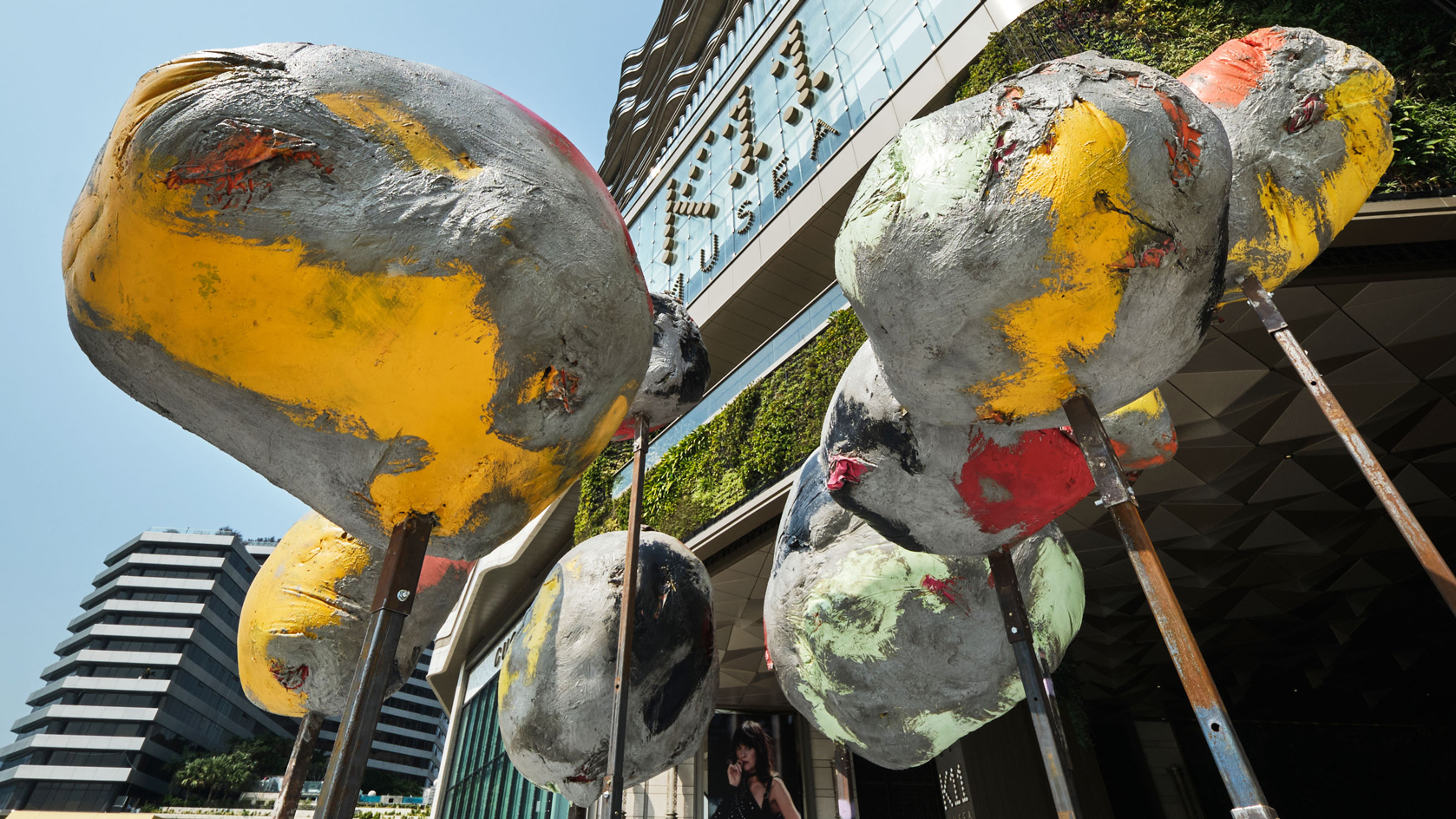 Art Basel Hong Kong 2023: can the city’s art scene bounce back?
Art Basel Hong Kong 2023: can the city’s art scene bounce back?Art Basel Hong Kong 2023 is about to kick off following years of restrictions. Catherine Shaw explores what we can expect in and around this year’s fair (23-25 March 2023), and whether Hong Kong can bounce back to reclaim the title of ‘Asia’s art hub’
-
 Yayoi Kusama on love, hope and the power of art
Yayoi Kusama on love, hope and the power of artThere’s still time to see Yayoi Kusama’s major retrospective at M+, Hong Kong (until 14 May). In our interview, the legendary Japanese artist vows to continue to ‘create art to leave the message of “love forever”’
-
 Homoerotic paper cuttings and 3D-scanned Chinese restaurants tell stories of Asian migration
Homoerotic paper cuttings and 3D-scanned Chinese restaurants tell stories of Asian migrationIn Hong Kong, stories of Asian migration take over Blindspot Gallery in group show, ‘Soy Dreams of Milk’
-
 ‘A Show About Nothing’: group exhibition in Hangzhou celebrates emptiness
‘A Show About Nothing’: group exhibition in Hangzhou celebrates emptinessThe inaugural exhibition at new Hangzhou cultural centre By Art Matters explores ‘nothingness’ through 30 local and international artists, including Maurizio Cattelan, Ghislaine Leung, Hiroshi Sugimoto, Liu Guoqiang and Yoko Ono